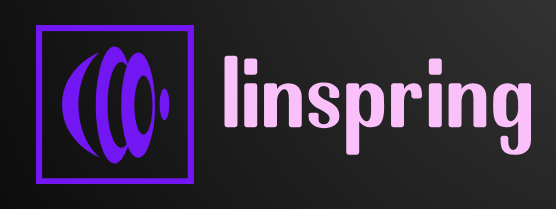Finding a custom spring manufacturer requires a systematic approach, as you're not just buying an off-the-shelf part but asking for a bespoke solution. Here's a comprehensive guide:
How to Find Custom Spring Manufacturers
1. Prepare Your Spring Specification (Crucial First Step)
Before you even start searching, you need to know what you need. A detailed specification will save you time and ensure you get accurate quotes. Include:
- Spring Type: Compression, Extension, Torsion, Flat, Wave, Garter, etc.
- Dimensions:
- Wire Diameter
- Outer Diameter (OD) and/or Inner Diameter (ID)
- Free Length (uncompressed)
- Solid Height (fully compressed, if applicable)
- Number of Coils/Waves
- End Type (e.g., ground and closed, open)
- Hook Geometry (for extension springs)
- Leg Angle/Length (for torsion springs)
- Material:
- Type: Stainless Steel (302, 316, 17-7 PH), Carbon Spring Steel (Music Wire, Hard Drawn), Inconel, Beryllium Copper, Phosphor Bronze, Titanium, etc.
- Grade/Specification: If known.
- Load Requirements:
- Load at Specific Deflection/Height (e.g., 20 lbs at 1.5" height).
- Spring Rate (if known or desired).
- Operating Environment:
- Temperature Range (min/max)
- Стійкість до корозії requirements
- Exposure to Chemicals, UV, etc.
- Magnetic/Non-magnetic requirement
- Fatigue Life / Cycle Requirements: How many cycles will the spring undergo? (e.g., static, 1000 cycles, 1 million cycles).
- Quantity:
- Prototype / Small Run: (e.g., 10-100 pcs)
- Medium Run: (e.g., 1,000-10,000 pcs)
- High Volume: (e.g., 100,000+ pcs)
- Tolerances: What is the acceptable variation on dimensions and load?
- Secondary Operations: Plating, powder coating, shot peening, passivation, grinding.
- CAD Drawings: If available, provide 2D or 3D drawings.
2. Search Methods
A. Online Search Engines (Google, Bing)
- Specific Keywords: Start with very precise searches.
- "Custom [Spring Type] Manufacturer" (e.g., "Custom Wave Spring Manufacturer," "Custom Torsion Spring Manufacturer")
- "Precision Spring Manufacturer"
- "Spring Prototyping Services"
- "Spring Design and Manufacturing"
- "Medical Grade Spring Manufacturer" (if applicable)
- Include your geographic location if you prefer local suppliers: "Custom Spring Manufacturer [Your City/State/Country]"
- Include material if specialized: "Inconel Spring Manufacturer Custom"
B. Industry Directories & Databases
- Thomasnet (USA-centric but global reach): An excellent resource. You can filter by spring type, material, capabilities (e.g., rapid prototyping, certifications), and location.
- Kompass: Another global business directory.
- Local Manufacturing Directories: Many regions have online directories for their manufacturing base.
C. Industry Associations
- Spring Manufacturers Institute (SMI): If you're in North America, this is the authoritative body. Their website often has a "Find a Supplier" or "Member Directory" tool. Members are typically reputable and adhere to industry standards.
- European Spring Federation (ESF): For manufacturers in Europe.
- Other Regional/National Spring Associations: Check for similar organizations in your specific country.
D. Trade Shows & Exhibitions
- Design & Manufacturing Shows: Events like IMTS, Fabtech, MD&M (Medical Design & Manufacturing), or regional Design & Manufacturing expos often feature spring manufacturers showcasing their capabilities. This allows for face-to-face interaction.
- Industry-Specific Shows: If your product is for a specific industry (e.g., automotive, aerospace), look for trade shows within that sector.
E. Referrals & Networking
- Ask Your Network: Industrial designers, mechanical engineers, purchasing managers, or other manufacturers often have preferred spring suppliers they can recommend.
- Supplier for Related Components: If you're sourcing bearings, fasteners, or other mechanical components, ask those suppliers if they can recommend spring manufacturers (they often work with them).
3. Evaluating Potential Manufacturers
Once you have a list of potential suppliers, here's what to look for:
- Capability:
- Do they specialize in your spring type? (Some are better at wave springs, others at large compression springs for example).
- Can they work with your specified material?
- Do they have the tooling and machinery for your dimensions and wire diameter?
- Do they offer design assistance if you need it?
- Can they handle your required quantity (prototypes vs. high volume)?
- Quality & Certifications:
- ISO 9001: Standard for quality management systems.
- AS9100: For aerospace applications.
- IATF 16949: For automotive applications.
- ISO 13485: For medical devices.
- Check their Quality Control (QC) processes.
- Experience & Reputation:
- How long have they been in business?
- Do they have experience with similar applications or industries?
- Can they provide references or case studies?
- Check online reviews or forums (though treat with caution).
- Engineering Support:
- Do they have experienced engineers who can review your design, offer recommendations, and help optimize the spring for manufacturability and performance?
- Are they responsive to questions and provide clear communication?
- Lead Times:
- Can they meet your project timelines, especially for prototypes and initial production runs?
- What are their typical lead times for custom orders?
- Cost:
- While not the only factor, compare quotes from several manufacturers. Be wary of quotes that are significantly lower, as they might compromise on quality or service.
- Location:
- Proximity can be beneficial for communication, site visits (if necessary), and logistical reasons, especially for prototyping or urgent needs.
- Testing & Validation: Do they offer in-house testing services (force testing, fatigue testing, material analysis) to validate spring performance against your specifications?
Tip: Start by contacting 3-5 manufacturers that seem like a good fit. Share your detailed specification, and assess their responsiveness, engineering questions, and clarity of quotes. This initial interaction can tell you a lot about their professionalism and suitability.
